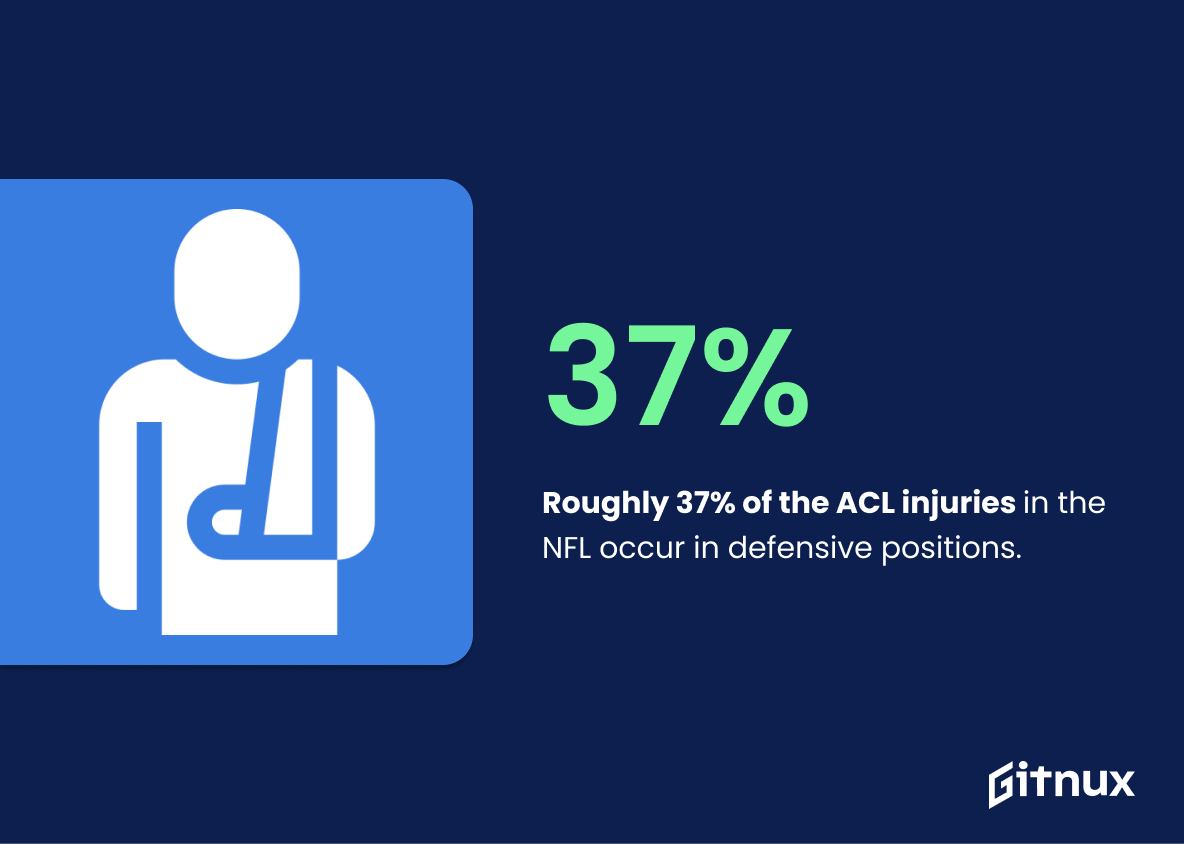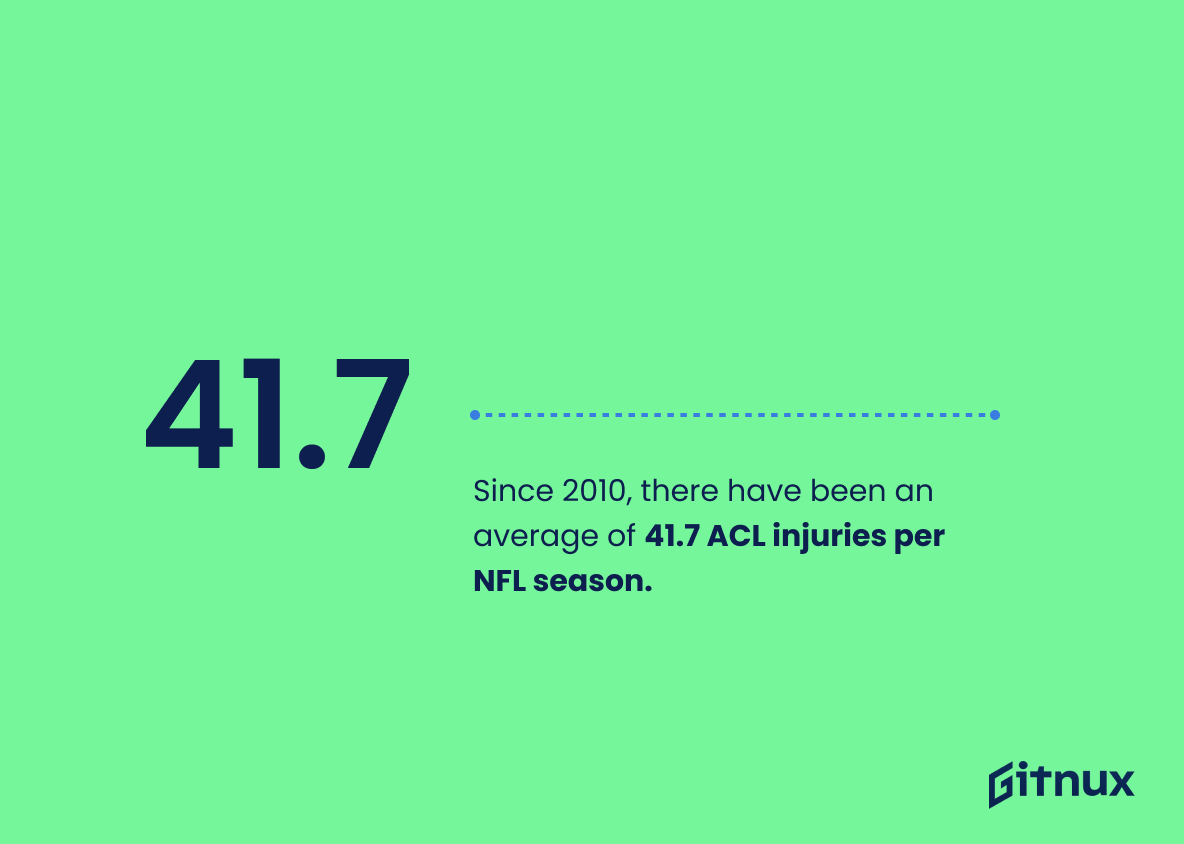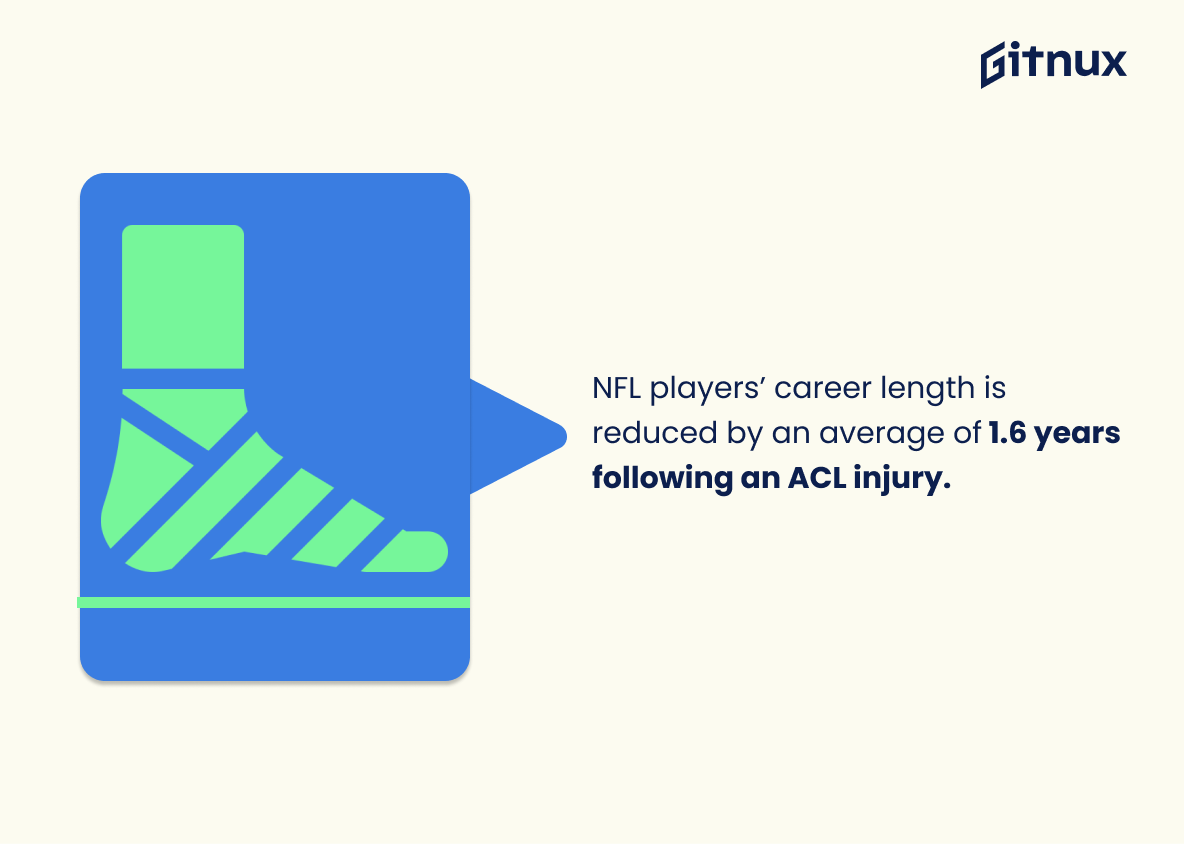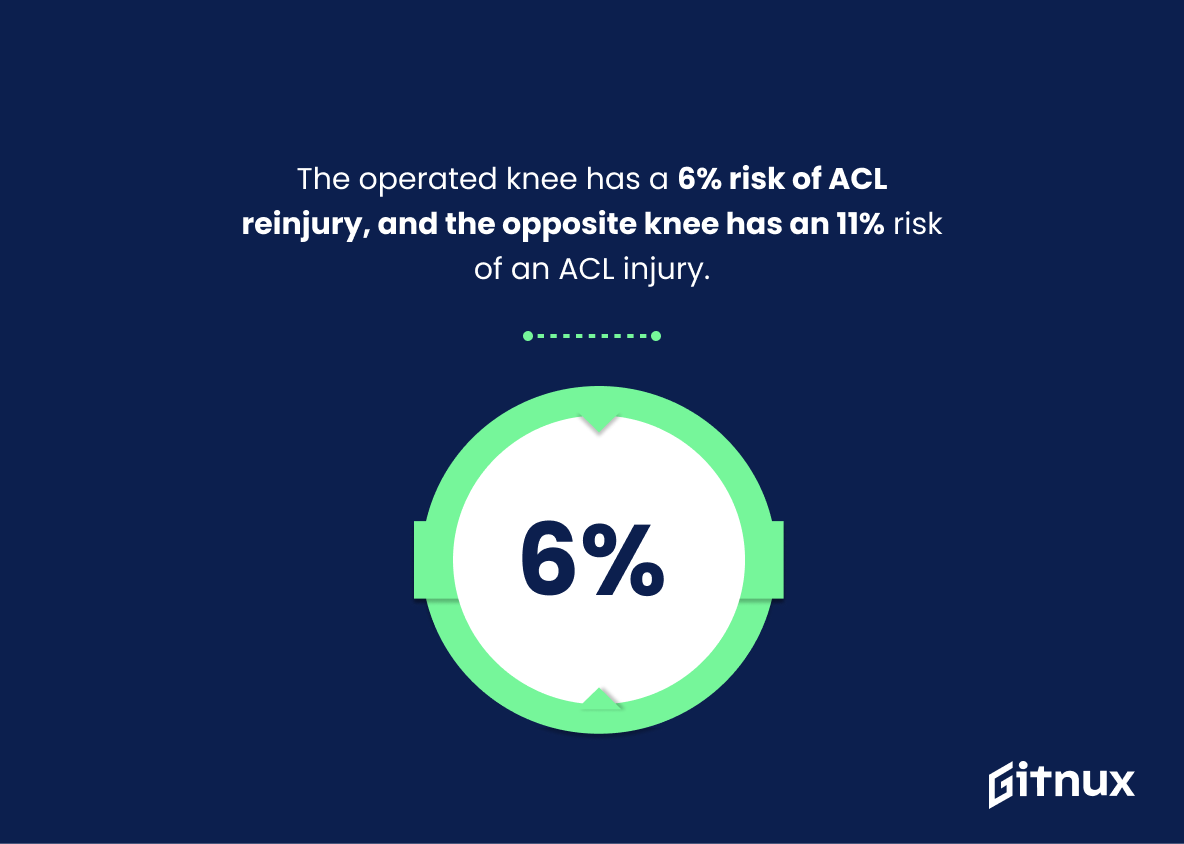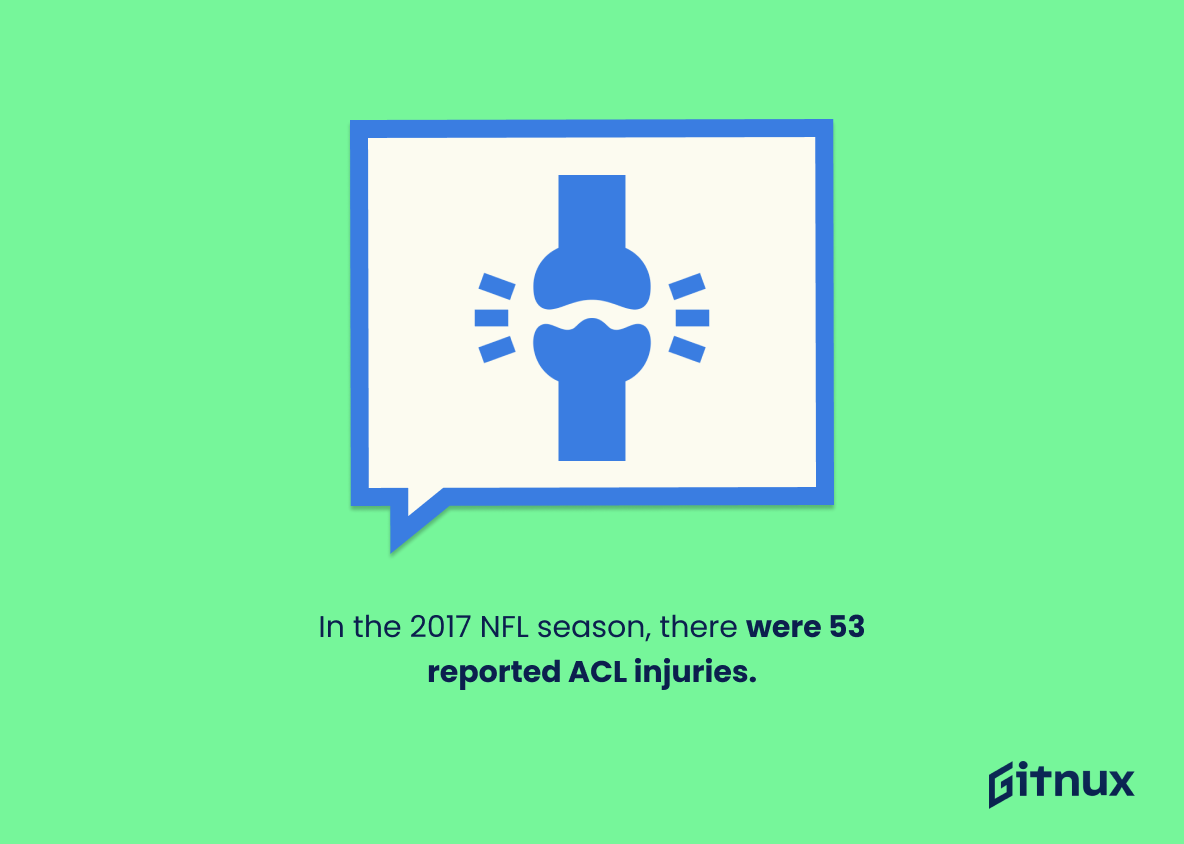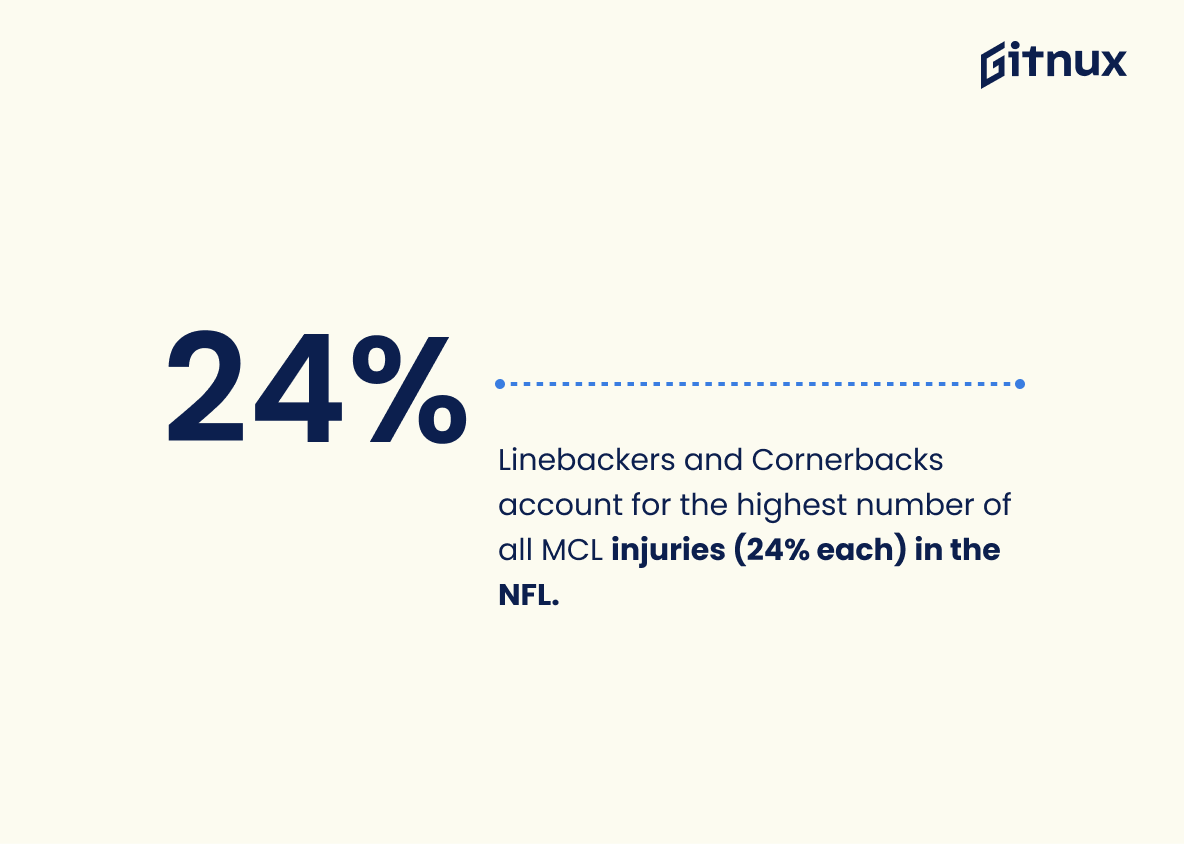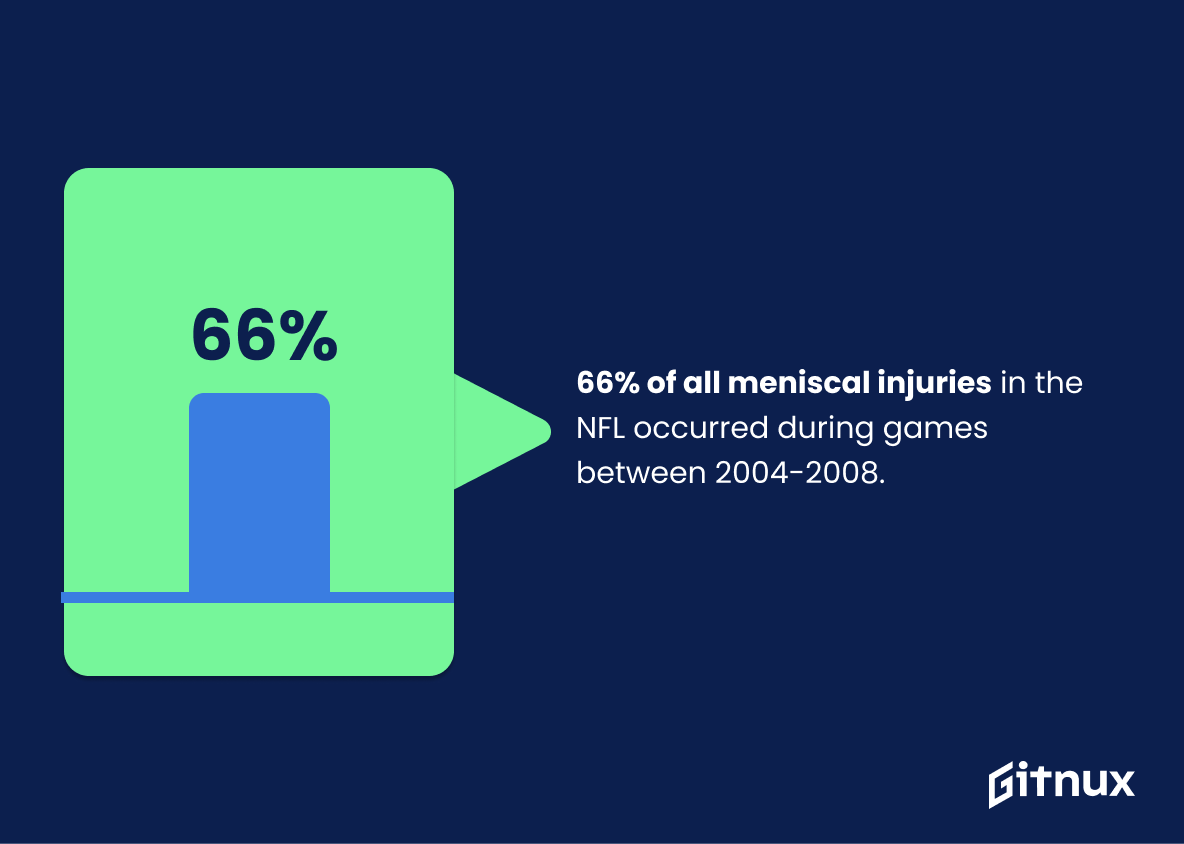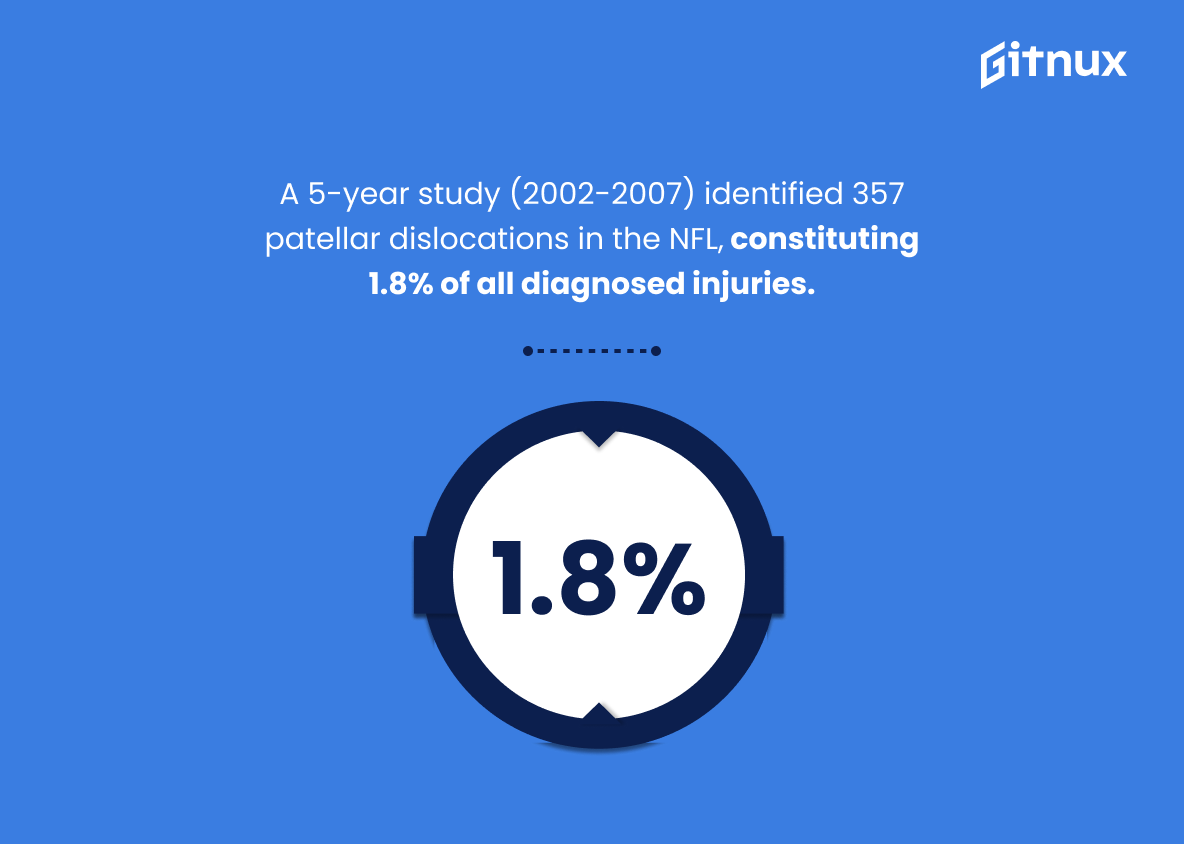Knee injuries are a common occurrence in the NFL, with players suffering from ACL tears, MCL sprains, patellar dislocations and more. In this blog post we will be looking at statistics related to knee injuries in the NFL over recent years. We’ll look at how many knee injuries occur each season on average, which positions are most affected by these types of injury and what kind of recovery time is expected for those who suffer an injury. Additionally, we’ll explore whether playing surface has any effect on the likelihood or severity of such an injury occurring. Finally, we’ll discuss some preventative measures that can help reduce risk factors associated with these kinds of sports-related trauma.
Nfl Knee Injuries Statistics Overview
Roughly 37% of the ACL injuries in the NFL occur in defensive positions.
This statistic is a telling indication of the prevalence of ACL injuries in the NFL, particularly among defensive players. It highlights the need for greater awareness and prevention of knee injuries in the NFL, as well as the need for better protective equipment and training for defensive players. It also serves as a reminder that knee injuries can have a significant impact on a player’s career, and that the NFL must take steps to ensure that players are adequately protected.
The average time lost due to an ACL injury in the NFL is 11.6 months.
This statistic is a stark reminder of the severity of ACL injuries in the NFL. It highlights the long-term impact of such injuries, with the average time lost due to an ACL injury being almost a full year. This statistic serves as a warning to players, coaches, and fans alike that knee injuries should not be taken lightly.
Since 2010, there have been an average of 41.7 ACL injuries per NFL season.
This statistic serves as a stark reminder of the prevalence of ACL injuries in the NFL, highlighting the need for greater awareness and prevention of such injuries. It is a powerful indicator of the magnitude of the issue, and a call to action for the NFL to take steps to reduce the number of ACL injuries in the league.
NFL players’ career length is reduced by an average of 1.6 years following an ACL injury.
This statistic is a stark reminder of the long-term consequences of ACL injuries in the NFL. It highlights the fact that, even with the best medical care and rehabilitation, NFL players are still likely to experience a significant decrease in their career length following an ACL injury. This is a sobering reminder of the importance of taking preventative measures to reduce the risk of ACL injuries in the NFL.
The risk of reinjuring the ACL in the operated knee is 6%, while the risk of suffering an ACL injury in the contralateral knee is 11%.
This statistic is a crucial reminder of the importance of taking preventative measures when it comes to NFL knee injuries. It highlights the fact that the risk of reinjury is significantly lower than the risk of suffering an ACL injury in the opposite knee, indicating that proper rehabilitation and preventative measures can help reduce the risk of further injury.
From 2011 to 2016, the knee was the second leading body part for injuries in NFL players, accounting for 22.3% of all injuries.
This statistic is a powerful indicator of the prevalence of knee injuries in NFL players, demonstrating that knee injuries are a major issue in the sport. It is an important piece of information to consider when discussing NFL knee injuries, as it provides a clear picture of the scope of the problem.
In the 2017 NFL season, there were 53 reported ACL injuries.
This statistic is a stark reminder of the prevalence of ACL injuries in the NFL. It serves as a reminder that knee injuries are a serious issue in the NFL, and that teams, players, and coaches need to be aware of the risks and take steps to prevent them. It also highlights the need for further research into the causes and prevention of ACL injuries in the NFL.
Linebackers and Cornerbacks account for the highest number of all MCL injuries (24% each) in the NFL.
This statistic is significant in the context of NFL knee injuries because it highlights the positions that are most prone to knee injuries. Linebackers and Cornerbacks are two of the most physically demanding positions in the NFL, and the fact that they account for the highest number of MCL injuries indicates that the physicality of these positions can take a toll on the players’ knees. This statistic serves as a reminder that knee injuries are a serious issue in the NFL, and that players should take the necessary precautions to protect their knees.
66% of all meniscal injuries in the NFL occurred during games between 2004-2008.
This statistic is a telling indication of the prevalence of meniscal injuries in the NFL during the 2004-2008 period. It highlights the need for further research into the causes of these injuries and the implementation of preventative measures to reduce their occurrence. It also serves as a reminder of the importance of proper training and conditioning for NFL players to reduce the risk of such injuries.
A 5-year study from 2002-2007 found that 357 patellar dislocations occurred in the NFL, accounting for 1.8% of all diagnosed injuries.
This statistic is a powerful indicator of the prevalence of patellar dislocations in the NFL, providing a concrete example of the impact of knee injuries in the league. It demonstrates that, over the course of five years, patellar dislocations accounted for a significant portion of all diagnosed injuries, highlighting the need for further research and prevention measures to reduce the risk of such injuries.
Conclusion
The statistics presented in this blog post demonstrate the prevalence of knee injuries among NFL players. The data shows that ACL, MCL, and patellar tendon tears are some of the most common types of knee injuries suffered by NFL athletes. Additionally, it is evident that non-contact scenarios account for a significant portion of these injuries as well as turf fields being more likely to cause injury than grass fields. Furthermore, offensive positions have been found to be at higher risk for ACL tears while defensive backs experience more non-contact ACL tears compared to other positions on the field. Finally, an average career length reduction following an ACL tear has also been observed along with a high rate (78%) return to play within 12 months after surgery.
References
0. – https://www.www.ncbi.nlm.nih.gov
1. – https://www.orthoinfo.aaos.org
2. – https://www.lermagazine.com
3. – https://www.apnews.com
